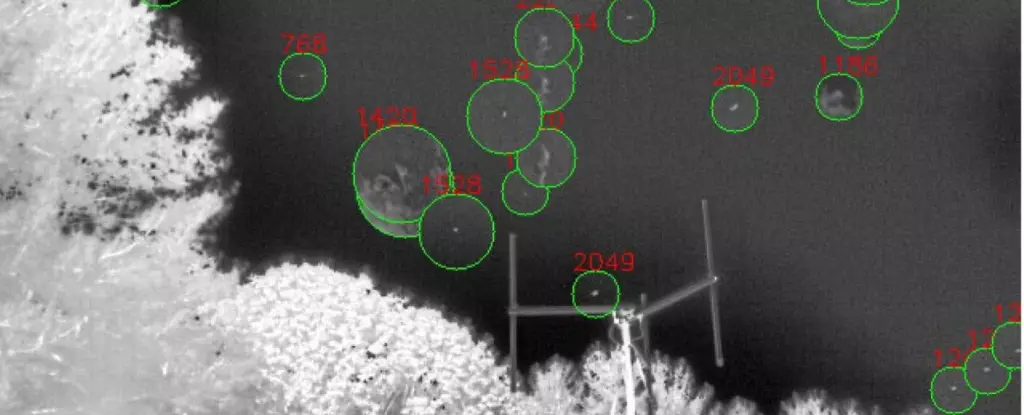In 2021, a significant shift in how we perceive the cosmos emerged through the release of a report by the Office of the Director of National Intelligence (ODNI), which brought to light declassified information on Unidentified Aerial Phenomena (UAP). This report ignited widespread interest, not only among enthusiasts and skeptics but also in the scientific community. The subsequent annual releases of reports by the Department of Defense via the All-domain Anomaly Resolution Office (AARO) have provided a consistent stream of findings, yet the overarching narrative remains tantalizingly incomplete due to a dearth of accessible scientific data.
The lack of empirical evidence surrounding UAP has led scholars and researchers to actively seek innovative methodologies for probing the skies. A recent study spearheaded by the Harvard-Smithsonian Center for Astrophysics and the Galileo Project introduces an ambitious proposal to enhance the search for extraterrestrial spacecraft. This initiative, featuring an All-Sky Infrared Camera nicknamed Dalek, represents a pivotal development in our quest to uncover the truth about UAP and, perhaps, our place in the universe.
The Role of the Dalek: Exploring New Frontiers
The Dalek, named after the fictional machines from the renowned Doctor Who series, stands as a symbol of humanity’s relentless pursuit of knowledge. The device is not just a tribute to pop culture; it embodies cutting-edge technology aimed at deciphering the mysteries of the cosmos. Led by Laura Domine, this research team incorporates ideas from several institutions and experts, reflecting an interdisciplinary approach that is crucial for tackling biological and technological questions about life beyond Earth.
Presented at the 2025 Lunar and Planetary Science Conference, the Dalek is poised to become the first of many such observatories designed to operate efficiently and adjust rapidly to dynamically capture UAP data. This system aims to fulfill recommendations posited by NASA regarding future sensor technology—specifically, the ability to detect anomalies with precision and speed. Such proactive responses to transient phenomena will be acutely necessary if we hope to distinguish between ordinary and extraordinary objects in the skies.
A Multispectral Approach to UAP Detection
What sets the Dalek apart is its multimodal, multispectral capabilities. This goes beyond merely collecting visual data; it involves analyzing the movement, shape, and even the ambient sound of detected objects. By implementing integrative technologies that record various attributes, the observatory has the potential to present a holistic picture of each UAP event. This comprehensive collection of data is crucial, as simply identifying an object without contextual information often leads to misinterpretations or oversights, as historical reports have demonstrated.
Avi Loeb, a pivotal figure in this research and the director of the Galileo Project, emphasizes the undeniable role government data has played in shaping our understanding of UAP. Yet, he identifies a crucial limitation: many relevant materials remain classified, hindering public access to knowledge about possible implications. The Dalek observatory, therefore, may serve as a vital counterbalance to these restrictions, opening up a new avenue for empirical research in a previously opaque field.
A Machine Learning Revolution: Sorting Through the Cosmos
The Galileo Project’s innovative use of machine learning algorithms marks a significant step forward in analyzing UAP data. The integration of the You Only Look Once (YOLO) model and the Simple Online and Realtime Tracking (SORT) algorithm allows scientists to process vast amounts of observational data swiftly. By training these algorithms on familiar aerial phenomena such as planes and drones, researchers can effectively filter out mundane objects, thereby narrowing their focus to the truly anomalous entities.
Initial results from the Dalek’s first five months of operation have yielded promising outcomes. With approximately 500,000 objects detected, an alarming 80,000 of these trajectories were flagged. While a substantial number corresponded to recognized aerial phenomena, the ambiguous classifications of approximately 144 trajectories suggest the potential for previously unobserved activities or technologies. This filtering not only pushes the boundaries of our current understanding but also acts as a call to arms for both scientists and enthusiasts chasing the dream of discovering life beyond our planet.
The Path Forward: Collision of Science and Imagination
As humanity stands on the precipice of what could be groundbreaking discoveries, the Galileo Project calls for an ambitious yet disciplined pursuit of the unknown. The endeavor to locate technosignatures—evidence of advanced extraterrestrial technologies—poses existential questions about our place in the universe. Loeb’s ambitions echo across a generation eager to understand if we are indeed alone or whether civilization’s reach extends beyond our atmosphere.
In the end, the Dalek represents more than just a tool for scientific inquiry; it symbolizes an evolution in how we as a species perceive the cosmos. Convulsive technological advancements, intertwined with the human spirit’s innate curiosity, may guide us to new insights about what lies beyond Earth. The future of space exploration is not just a professional pursuit—it’s a fundamental journey into the essence of being human, our fears, expectations, and unquenchable thirst for understanding.

